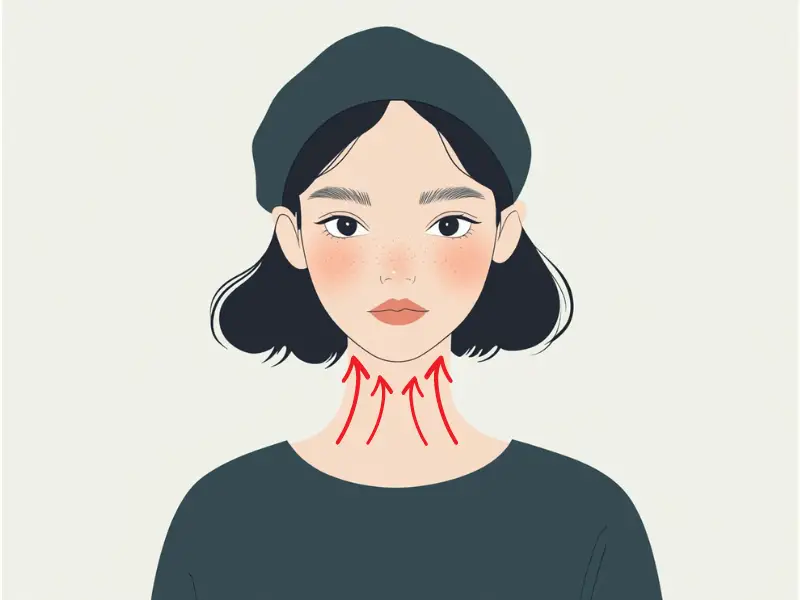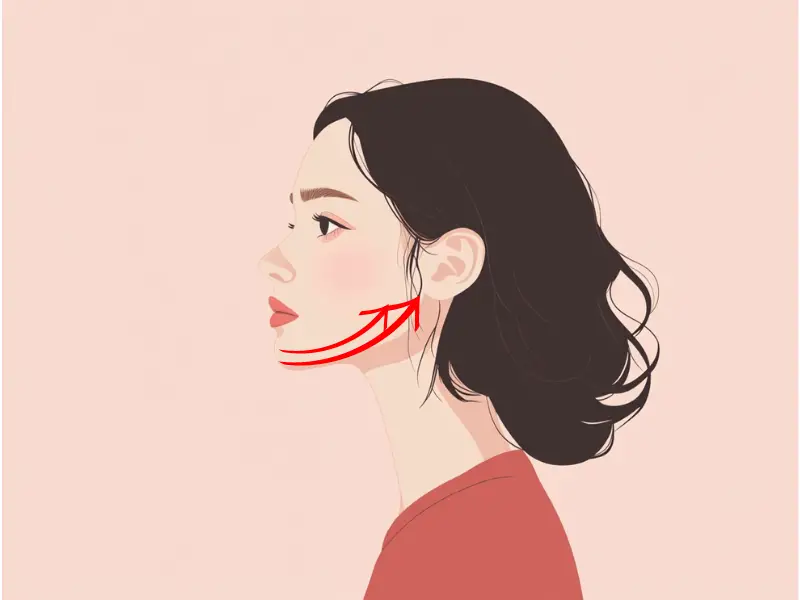Achieving a sharp, defined jawline is a popular goal for many people interested in facial sculpting techniques. Gua Sha, a centuries-old Chinese technique, is one of the most effective ways to enhance facial contours naturally. In this tutorial, we’ll guide you through the ultimate Gua Sha technique specifically tailored for the jawline. With just a few minutes each day, you can enjoy the benefits of this traditional practice. To learn more about the basics of Gua Sha and its incredible health benefits, check out our Gua Sha Basic Guide.
Benefits of Gua Sha for the Jawline
Before diving into the tutorial, here’s a quick overview of what Gua Sha can do for your jawline:
- Reduces Tension: Helps release muscle tightness and tension in the jaw, which can improve facial posture.
- Enhances Lymphatic Drainage: Encourages lymph fluid to drain, reducing puffiness around the jaw.
- Improves Blood Circulation: Boosts circulation for a natural glow and healthier skin.
- Contours the Jawline: Gently massages and sculpts for a more defined, lifted appearance.
- Promotes Relaxation: Eases stress, which can prevent clenching and grinding that affect the jawline’s shape.
With these benefits in mind, let’s go step-by-step through the best techniques for jawline sculpting.
Step 1: Gather Your Gua Sha Tools and Prep Your Skin
To get the best results from your Gua Sha routine, preparation is essential.
- Choose the Right Tool: A Gua Sha tool with a smooth, heart-shaped edge or an edge specifically shaped for the jawline is ideal for targeted sculpting.
- Cleanse Your Face: Start with a clean, dry face to ensure that there’s no residue that might irritate your skin.
- Apply a Facial Oil: Apply a small amount of facial oil or serum. This step reduces friction and allows the tool to glide smoothly over your skin. Opt for oils that suit your skin type, such as jojoba for oily skin or rosehip oil for dry skin.
“Wooden Gua Sha tools have a warm feel, making them ideal for those who prefer not to use something cool. They offer a gentler, more natural sensation that feels very grounding on the skin,” explains Ms. Mai Sogawa, a senior TCM therapist.
Step 2: Start with Gentle Strokes on the Neck
Starting on the neck helps encourage lymphatic drainage, which is important for reducing puffiness and achieving a more defined jawline.
- Place the Gua Sha Tool: Position the flat edge of the tool at the base of your neck on one side, just above the collarbone.
- Use Upward Strokes: Glide the tool upward, moving from the base of your neck toward your jawline.
- Repeat 5–7 Times on Each Side: Be gentle, but apply slight pressure to stimulate the area. This also preps the lymph nodes to help drain fluid from the face and jawline.

Step 3: Work Along the Jawline
Now, let’s focus directly on sculpting and lifting the jawline.
- Position the Tool at Your Chin: Hold the Gua Sha tool so that it hugs your chin. You can use the notch of the tool (if it has one) to fit snugly along the jawline.
- Move Outward to the Ear: Glide the tool along the jawline, applying gentle pressure as you move from the chin outward to the earlobe. This motion helps tone and lift the jawline.
- Repeat 5–10 Times on Each Side: To get the best results, perform each stroke slowly and mindfully. You should feel a gentle tug as the tool glides across the skin, not any sharp pulling.

Pro Tip: Maintain a Consistent Angle
Hold the Gua Sha tool at about a 15° angle (nearly flat) against the skin. This helps avoid irritation and allows for a smoother glide, focusing the pressure on contouring.
Step 4: Lift and Sculpt Around the Chin
The area under your chin is just as important for achieving a defined jawline.
- Place the Tool at the Center of Your Chin: Position the curved side of the tool directly under the center of your chin.
- Sweep Outward and Up: Glide the tool upward and outward, moving from the center of your chin toward each earlobe.
- Repeat 5–7 Times on Each Side: This motion not only sculpts the jaw but also targets any potential fluid retention under the chin, which can contribute to puffiness.

“For those with a square jaw, where the masseter muscle is often tight, it’s good to loosen it up with gentle hand massage before using Gua Sha,” advises Ms. Mai Sogawa. “For rounder faces prone to puffiness, focus on lifting and draining strokes from the chin to the ears and along the cheekbones.”
Step 5: Target the Jawline’s Endpoints for Added Definition
For a final touch, let’s define the endpoints of the jaw, where the jaw meets the neck.
- Position the Tool on the Jawbone’s Edge: Place the tool just below the ear where the jawbone curves.
- Use Small Upward Strokes: Apply gentle, upward strokes along the edge of the jawbone to highlight this natural contour.
- Repeat 5–7 Times on Each Side: This step gives a little extra lift to the jawline and highlights the bone structure, enhancing the sharpness of the jaw’s endpoints.

Step 6: Finish with a Relaxing Massage
Once you’ve completed the contouring strokes, it’s beneficial to end with a short massage to relax the jaw muscles further.
- Use Light, Circular Motions: With the flat edge of the tool, perform light, circular strokes along the jawline, moving from the chin to the ear.
- Take a Deep Breath: Gua Sha is not only about the physical benefits; it’s also about relaxation. Take a few deep breaths to release any residual tension.

Aftercare Tips
- Rinse and Clean Your Gua Sha Tool: Clean your Gua Sha tool with warm water and a gentle cleanser after each use to prevent any buildup of oil or bacteria.
- Hydrate Your Skin: Apply a moisturizer to lock in hydration and enhance the effects of your Gua Sha practice.
- Frequency: For optimal results, repeat this jawline-sculpting routine 3–5 times a week. Consistency will help you maintain the contoured look you’re aiming for.
Potential Side Effects to Consider
While Gua Sha is generally safe, here are a few things to keep in mind:
- Redness and Minor Bruising: A slight flush is normal, but if you experience bruising, ease up on the pressure.
- Sensitivity: Sensitive skin types may benefit from using the technique only a few times a week.
- Allergic Reactions to Oils: Always patch-test facial oils first to ensure you don’t experience any irritation or breakouts.
Final Thoughts on Perfecting Your Jawline with Gua Sha
With consistent practice, Gua Sha can become a valuable addition to your skincare routine, offering both cosmetic and therapeutic benefits. It requires minimal time, and as you refine your technique, the practice itself becomes easier and more effective. Whether you’re looking to reduce puffiness, release jaw tension, or enhance the natural contours of your face, Gua Sha provides an accessible, holistic solution for a defined jawline.

Try our Anti-Aging Gua Sha Tool designed to bring out your skin’s natural glow.
Best Gua Sha Product- Anti-Aging: The tool is designed to target 11 specific aging signs such as wrinkles and sagging skin. By following the 7-step routine, users can improve skin firmness and reduce fine lines naturally.
- Enhances Skincare Routine: It works effectively with serums and lotions, boosting absorption and efficacy of skincare products.
- Visible Skin Improvement: Users can expect a smoother complexion, reduced puffiness, and a more youthful appearance.
 P. Sze
P. Sze 
















